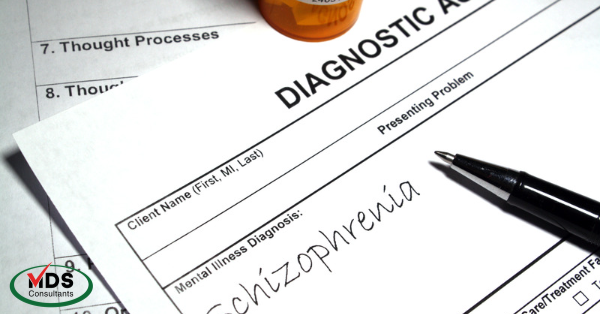Changes to Section I and Schizophrenia
In July 2022, CMS released an erratum to the RAI (Resident Assessment Instrument) Manual that included more detailed guidance on the use of diagnoses for section I, including the schizophrenia diagnoses that have been used as exclusion criteria for psychotropic medication use.
You may be wondering why was this change made?
When it comes to schizophrenia specifically, CMS monitored the use of this exclusion diagnosis – especially as its use increased gradually after the development of the psychotropic use quality measure. The rate of schizophrenia occurrence in nursing homes is as high as 11% in some areas, while the diagnosis occurs at a rate of less than 1% in the general population (CMS, 2021; Thomas, 2021). This gap suggested to CMS that there may be an overuse of the schizophrenia diagnosis in Skilled Nursing Facilities.
The new RAI Erratum addressed the trend, stating,
“In situations where practitioners have potentially misdiagnosed residents with a condition for which there is a lack of appropriate diagnostic information in the medical record, such as for a mental disorder, the corresponding diagnosis in Section I should not be coded, and a referral by the facility and/or the survey team to the State Medical Boards or Boards of Nursing may be necessary.”
Therefore we see that CMS is increasing their requirement for diagnostic documentation across the board. CMS added the following example that specifically applies to schizophrenia,
“The resident was admitted without a diagnosis of schizophrenia. After admission, the resident is prescribed an antipsychotic medication for schizophrenia by the primary care physician. However, the resident’s medical record includes no documentation of a detailed evaluation by an appropriate practitioner of the resident’s mental, physical, psychosocial, and functional status (§483.45(e)) and persistent behaviors for six months prior to the start of the antipsychotic medication in accordance with professional standards.
Coding: Schizophrenia item (I6000), would not be checked.
Rationale: Although the resident has a physician diagnosis of schizophrenia and is receiving antipsychotic medications, coding the schizophrenia diagnosis would not be appropriate because of the lack of documentation of a detailed evaluation, in accordance with professional standards (§483.21(b)(3)(i)), of the resident’s mental, physical, psychosocial, and functional status (§483.45(e)) and persistent behaviors for the time period required.”
Item I6000 on the MDS (MINIMUM DATA SET), labeled as “Schizophrenia” includes schizoaffective and schizophreniform disorders. It does not include unspecified psychosis, delusional disorder, or schizotypal personality disorder. This means that the Diagnosis and Statistical Manual of Mental Disorders, 5th Edition criteria for either schizophrenia, schizoaffective, or schizophreniform must be met as determined by a psychiatric provider.
To meet the criteria the patient must experience at least 2 of: delusions, hallucinations, disorganized speech, disorganized or catatonic behavior, or negative symptoms for at least one month (APA, 2022). Schizoaffective disorder is recognized when there are also symptoms of depression or mania (APA 2022). For schizophrenia, there also must be a dysfunction in functioning at work, relationships, self-care, or school related to the above symptoms (APA, 2022).
If the nursing home feels that a resident meets the criteria for a mental health diagnosis, nursing and social work staff can document symptoms to assist the psychiatric provider in diagnosing and writing the diagnostic formulation. From the erratum wording, it seems like CMS will be looking for this documentation. Once the documentation and official diagnosis is in place, item I6000 may be checked on the MDS assessment!
Resources
American Psychiatric Association (2022). Diagnostic And Statistical Manual of Mental Disorders, Fifth Edition, Text Revision (DSM-5-TR)
Centers for Medicare and Medicaid Services. (2021). MDS 3.0 Frequency Report.https://www.cms.gov/Research-Statistics-Data-and-Systems/Computer-Data-and-Systems/Minimum-Data-Set-3-0-Public-Reports/Minimum-Data-Set-3-0-Frequency-Report
MDS 3.0 RAI User’s Manual (v1.17.1R) Errata (v2) (cms.gov)
Thomas, K. (2021). Phony Diagnoses hide high rates of drugging at nursing homes. The New York Times. https://www.nytimes.com/2021/09/11/health/nursing-homes-schizophrenia-antipsychotics.html#:~:text=At%20least%2021%20percent%20of%20nursing%20home%20residents,a%20Times%20investigation%20found.%20Give%20this%20article%201004
